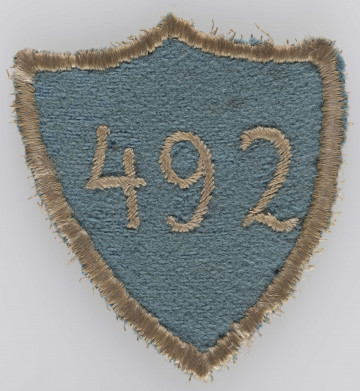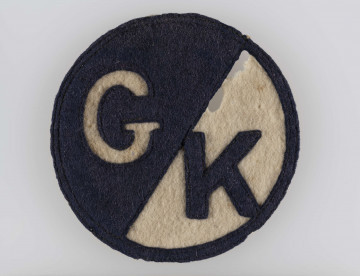
School shield
1930 — 1939
National Museum in Lublin
Part of the collection: Memorabilia related to education and scouting in Lublin 1918–1944
The history of the State Coeducational Merchant Middle School dates back to 1918 when the Polish Vocational School for Women was established at 3 Lipowa Street in Lublin. It was established at the initiative of four women’s associations: the Union of Polish Catholic Women, the Lublin Women Circle, the Queen Jadwiga Circle and the Society for the Protection of Women. The aim of establishing the school was to enable young girls to obtain appropriate professional qualifications. At the school, skills related to tailoring, linen making, bookbinding, trade, gardening and home economics were taught. The studies lasted three years, the candidates had to be over fourteen years old and to possess a certificate of completion of seven years of primary school or four years of secondary school.
Already in 1919, the facility received the rights of a state institution. It was renowned for its high level of organisation and teaching. In 1924, by the decision of the minister of Religious Affairs and Public Education, it adopted a new name (The State School of Industry and Commerce for Women) and became a secondary school. In 1925, the school received the recommendation of the Minister of Education, Stanisław Grabski.
Three years later, a decision was made to build a new facility at 10 Spokojna Street in Lublin. It was designed by Ignacy Kędzierski, an architect from Lublin, who also designed the nearby building of today’s Provincial Office. Classes at Spokojna Street began in 1931. The facility was one of the only six vocational schools for girls existing in the Lublin region.
Until 1932, education in the Second Polish Republic was not standardised. That year, the so-called Jędrzejewicz reform was passed, named after Janusz Jędrzejewicz, the minister of Religious Affairs and Public Education. In line with it, compulsory education was introduced at the level of the primary school, where the full curriculum was taught in a seven-class cycle. The next stage was a six-class general education school, which was divided into two stages: a four-year general gymnasium and a two-year general secondary school (lyceum).
As a result of the reform, in the school year 1935/1936, the School of Industry and Commerce was divided into two schools: the State Coeducational Middle School for Merchants and the State Female Gymnasium for Tailors. Doctor Janina Izdebska became the director of the first facility.
Dimensions
cały obiekt: height: 5,1 cm, width: 6,4 cm
Technique
sewing
Material
fabric
Creation time / dating
Creation / finding place
Owner
The National Museum in Lublin
Identification number
Location / status

1930 — 1939
National Museum in Lublin

1938 — 1939
National Museum in Lublin

1918 — 1939
National Museum in Lublin
DISCOVER this TOPIC
Museum of King Jan III's Palace at Wilanów
DISCOVER this PATH
Educational path